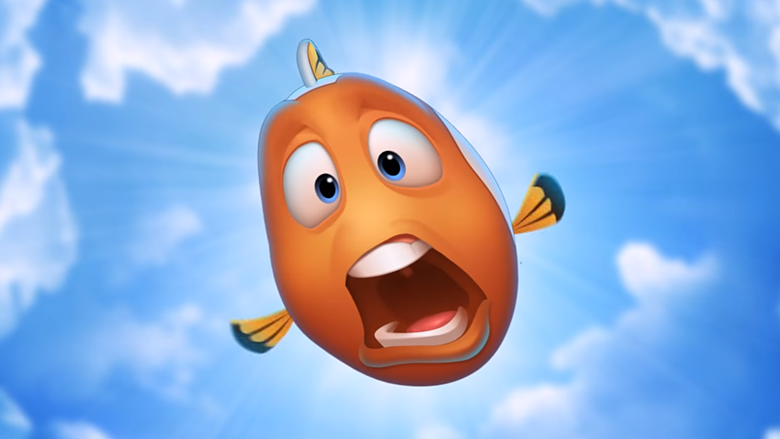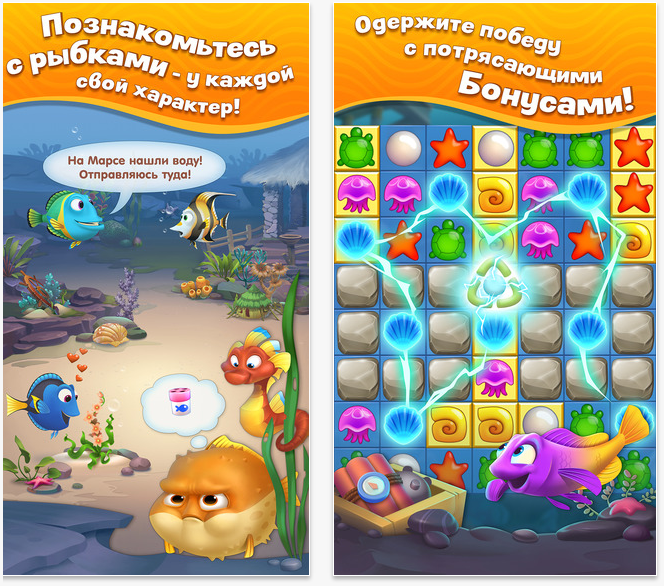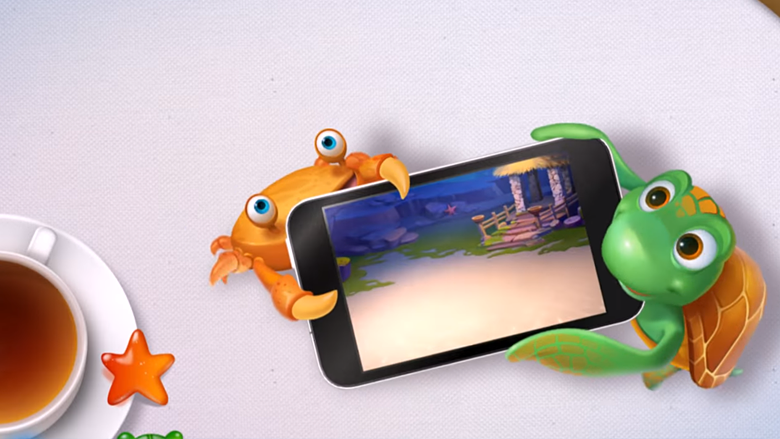About the history of the development of the Fishdom: Deep Dive project, its design and metrics, – App2Top.ru Anton Andreev, project manager of Playrix, told us.

Hi! The first part of the game was released in 2008 on PC. Please tell us about the history of the series itself. How important was it for the company and, from your point of view, for the casual market?
Hi! The idea of creating Fishdom came to us under the impression of such projects as Big Kahuna Reef and Tropix. Inspired, we wanted to make a beautiful match-3 sandbox game. Fishdom was developed for a long time – we constantly changed and improved something, trying to make the game as high quality as possible. As a result, it turned out to be very successful and was in the top for quite a long time.
Clearly, the results of Fishdom were important for the company. It was one of our main products at that time. As for the impact of the game on the casual market, it is difficult for us to judge here. After Fishdom, quite a few more similar games came out, so it probably had some effect.
As we understood, the mobile Fishdom is a modified version of Fishdom 3, which was released on PC in 2014. Why didn’t they make a mobile game from scratch?
You could say that. And they didn’t do it from scratch, obviously, so that it turned out faster.
Why did I ask about this: despite the great fascination, it is clear that the entire visual content of the original has been transferred to the game almost unchanged, which does not look very advantageous on high-resolution screens. This suggests that the project for the company itself shot unexpectedly. Perhaps it was even an experiment. Is it so?
It all started with the usual porting of the PC version to iOS. The decision to remake the game for free-to-play was made literally at the last moment, when the porting was almost completed. We really didn’t know what would come of it. There was an assumption that such a game could be successful, and we tried.
The interesting thing about all this is that the game was ready almost 2 years ago, but then we could not assess its potential. Launched on a soft launch, something went wrong, and we decided to return to the proven premium version of the game. And only after more than a year we guessed to try again and this time we did everything right.
For me, one of the central questions to the mobile Fishdom is its game cycle. He doesn’t lock up. The player can not pump aquariums at all, play himself calmly in match-3. Why did you take this step?
We hear this question quite often. We consciously took this step. Fishdom is a free game, and everyone plays the way they like. We do not see the need to force the player to do something in the aquarium. If someone is not interested in the aquarium, then the fact that we force him to do something there will not make it better. And if it is interesting, then the aquarium will be a natural motivation anyway.
What is the reason for the rejection of replayability of levels, because in this case the speed of production of new content should be obviously higher?
We discussed the issue of replayability of the levels ourselves for quite a long time. Of course, we had ideas to add a map and the possibility of replaying, but with them navigation in the game became much more complicated. Everything was getting too cumbersome. As a result, we still returned to the current scheme of the game. It looked simpler and more concise, and the production of new content is not such a difficult task.

Does the difficulty of the levels vary depending on the number of attempts made by the user?
No. There is nothing like that in the game now.
Does the difficulty on the level change dynamically depending on how the player behaves on the map (if so, how exactly do you adjust it)?
The complexity does not change in any way.
Structurally, is there some kind of complexity curve for the levels (straight line, exponent, FUUU factor)?
Yes, there is a complexity curve (FUUU factor). There are levels of peak difficulty on the curve, and after them there are easier levels where the player gets a “respite”. In this regard, everything is quite standard.
Approximately at what level do non-paying players start to “fall off”?
As a rule, the initial levels have a larger number of dumps. In our case, the turning point is the difficult 26th level, after which the number of dumps decreases sharply.
Interested in the frequency of submission of new obstacles. Is there any pattern, for example, on how many levels is this new obstacle “smeared”?
At the beginning of the game, new elements are introduced approximately every 5-10 levels. At a later game, much less often – about once every 25 levels.
What is the reason for the decision to leave the levels for a while (players don’t like them very much)?
According to statistics, these levels look no worse than the levels for moves. In addition, this mode allows you to knock down the usual rhythm of the game and thereby introduces dynamics into it. I don’t think these levels have any critical effect on the overall result.
Why are there only explosions in the field among the field bonuses?
Original, isn’t it?
Here, as you might guess, the game inherited this from the PC version. But at the same time, it really sets us apart from the huge number of match-3 games on the market. We have no information – is it good or bad, what role it played. One can only guess.
What is the average duration of a gaming session? Does it differ from platform to platform?
The average length of a gaming session on iOS is 8.5 minutes. On Android, a little less.

What push strategy did you use to bring the game to the top?
This question is not entirely out of my competence, but everything is quite standard here. We aggressively bought ads at the launch, added cross-promos to this in Township and our other games, and made a newsletter to our user base. In addition, we received features from Apple and Google. As a result, the game almost immediately hit the tops of grossing on both platforms.
And, of course, I can’t help but ask about the business parameters of the game: the retention of the 7/14/30 games, its ARPDAU and LTV in the leading regions.
I probably won’t tell you the income information. I’ll tell you better about DAU and retention.
iOS:
DAU 550 000
Day 7 retention – 33%
Day 14 retention – 26%
Day 30 retention – 22%
DAU 840,000 (after the launch, we reached a little over a million, but now it has fallen a little)
Day 7 retention – 30%
Day 14 retention – 23%
Day 30 retention – 18%
When we wrote the analysis of the game, we found out that the project had been in sotf-launch since 2013. Could you tell us why the game was in it for so long, after what changes in the game, Fishdom decided to publish to the whole world?
Yes, for the first time Fishdom was launched on a soft launch in 2013, and the game immediately showed very good results. Then we made a number of changes, and the metrics deteriorated dramatically. We still don’t know why this happened, but at that moment we decided that the good results were an accident. The project was frozen.
Fortunately, we still decided to finish the project and launch it again. We made a number of minor changes and launched the project again. The results were good again. At first we didn’t believe it, but when we saw that the metrics were not getting worse, we actively took up finishing the game, and a few months later the release took place.
Thank you very much for the interview!
